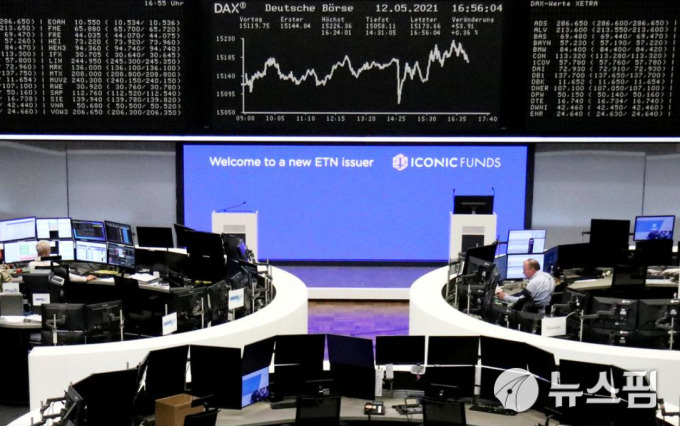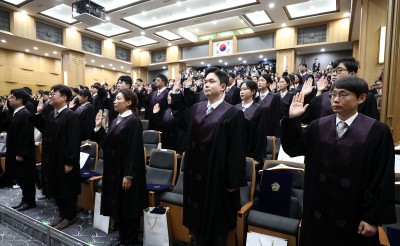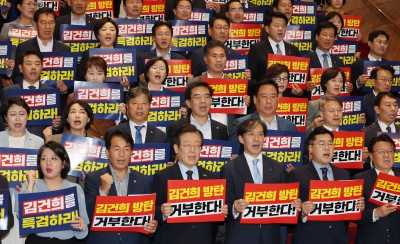Testimony of Governor Kevin Warsh
Hedge funds
Before the Committee on Financial Services, U.S. House of Representatives
July 11, 2007
Chairman Frank, Ranking Member Bachus, and other members of the Committee, I appreciate the opportunity to appear today on behalf of the Board of Governors of the Federal Reserve System to discuss the systemic risk implications of the growth of hedge funds.
The Board believes that the increased scale and scope of hedge funds has brought significant net benefits to financial markets. Indeed, hedge funds have the potential to reduce systemic risk by dispersing risks more broadly and by serving as a large pool of opportunistic capital that can stabilize financial markets in the event of disturbances. At the same time, the recent growth of hedge funds presents some formidable challenges to the achievement of public policy objectives, including significant risk-management challenges to market participants. If market participants prove unwilling or unable to meet these challenges, losses in the hedge fund sector could pose significant risks to financial stability.
The Board believes that the "Principles and Guidelines Regarding Private Pools of Capital" issued by the President's Working Group on Financial Markets (PWG) in February provides a sound framework for addressing these challenges associated with hedge funds, including the potential for systemic risk.1 The Board shares the considered judgment of the PWG: the most effective mechanism for limiting systemic risks from hedge funds is market discipline; and, the most important providers of market discipline are the large, global commercial and investment banks that are their principal creditors and counterparties.
The emphasis on market discipline neither endorses the status quo nor implies a passive role for government. In recent years, the global banks have significantly strengthened their practices and procedures for managing risk exposures to hedge funds. But, further progress on this front is needed--in no small part because of the increasing complexity of structured credit products such as collateralized debt obligations.2 The Board believes that even those banks with the most sophisticated risk-management practices must further strengthen their enterprise-wide systems to put the PWG Principles fully into practice.
As the PWG Principles rightly emphasize, supervisors of global banks are responsible for promoting market discipline by monitoring and evaluating banks' management of their exposures to hedge funds. As the umbrella supervisor of U.S. bank holding companies, the Federal Reserve continues to pay keen attention to hedge fund exposures and is working to ensure stronger risk-management practices. In addition, through the Federal Reserve Bank of New York, the Federal Reserve is actively facilitating collaboration and coordination among domestic and international supervisors of the global banks that are key counterparties and creditors of hedge funds. This area of significant focus--targeting management of exposures to hedge funds--is part of a broader, comprehensive set of supervisory initiatives that seeks to ensure that banks' risk-management practices and market infrastructures are sufficiently robust to cope with stresses that may accompany a deterioration of market conditions.
To that end, the Federal Reserve has been focusing on five key supervisory initiatives: (1) comprehensive reviews of firms' stress-testing practices; (2) a multilateral supervisory assessment of the leading global banks' current practices for managing their exposures to hedge funds; (3) a review of the risks associated with the rapid growth of "leveraged lending"; (4) a new assessment of practices to manage liquidity risk; and (5) continued efforts to reduce risks associated with weaknesses in the clearing and settlement of credit derivatives and other over-the-counter (OTC) derivatives.
Indeed, this Committee should be assured that the Federal Reserve has taken on these initiatives with great purpose and resolve. These initiatives are fully consistent with the founding purpose assigned to the Federal Reserve by Congress: to help mitigate the risks to the financial system and the broader economy caused by periodic bouts of instability and financial stress.
Hedge Funds
Although there is no precise legal definition, the term "hedge fund" generally refers to a pooled investment vehicle that is privately organized, administered by a professional investment manager, and not widely available to the public. The assets, investment strategies, and risk profiles of funds that meet this broad definition are quite diverse. In no sense are hedge funds an "asset class," like stocks, bonds, commodities, or real estate. While some hedge funds pursue investment strategies similar to those pursued by private equity funds, the strategies of the sector as a whole are quite varied. Some hedge funds are highly leveraged, while many use little or no leverage.
The hedge fund sector has grown very rapidly in recent years. By the end of 2006, more than 9,000 funds managed more than $1-1/2 trillion of assets.3 Assets managed in the United States are estimated to account for about 60 percent of the total. The hedge fund industry remains small relative to the U.S. mutual fund industry, which included more than 8,000 funds with about $10-1/2 trillion of assets under management at the end of 2006.4 Hedge funds, however, can make greater use of leverage than mutual funds. Their market impact is further magnified by the active trading of some funds. The aggregate trading volumes of hedge funds reportedly account for significant shares of total trading volumes in some segments of the financial markets.5
Possible Implications of Hedge Fund Growth for Financial Stability and Systemic Risk
In important respects, the activities of hedge funds tend to foster financial stability. They are significant providers of liquidity across the financial markets. Many hedge funds are devoted to exploiting arbitrage opportunities that emerge when financial asset prices become misaligned. For example, when interest rates spiked in the summer of 2003, demands by hedgers of mortgage prepayment risks strained the liquidity of interest rate options markets, sending option prices soaring. Some hedge funds saw profit opportunities in selling interest rate options, and their actions helped restore liquidity to the markets and reduced the cost of hedging.
The growth of hedge funds has also contributed to a broader dispersion of risks in the financial system, which thus far seems to have made the financial system somewhat less volatile. For example, in 2001 and 2002, significant losses caused by corporate bond defaults were absorbed without causing any discernible stress in the financial system. This experience contrasted with earlier periods when financial risks were concentrated at banks and other insured depositories. In those earlier periods, declines in asset prices created considerable financial and economic stress--the losses produced failures of many depositories and severely impaired the capital and lending capacity of others.
At the same time, the growth of hedge funds clearly presents risk-management challenges to participants in financial markets. If those risk-management challenges are not addressed successfully, problems in the hedge fund sector could pose risks to the broader financial system. For example, when the hedge fund Long-Term Capital Management (LTCM) nearly failed in September 1998, market participants were concerned that LTCM's losses would force liquidation of its very large positions in a wide range of financial markets, which could amplify price movements and erode market liquidity. Indeed, the primary factor that induced LTCM's counterparties and creditors to recapitalize the institution was their fear that liquidation of LTCM's positions would adversely affect the value of their own trading positions and their exposures to other counterparties.
In recent months, many market participants have expressed concern that a widening of credit spreads from relatively narrow levels could lead to hedge fund losses that would make funds unwilling or unable to maintain their existing positions, thus potentially eroding market liquidity. Such circumstances could pose significant challenges to hedge funds' counterparties and creditors and perhaps to other market participants. Thus far, however, the repricing of credit risk does not appear to have imposed significant strains on the financial system.
Limiting Potential Systemic Risks from Hedge Funds
Since the LTCM episode, policymakers have continued to discuss the best approach to limiting potential systemic risks from the activities of hedge funds. In the immediate aftermath of the episode, the PWG studied the implications for financial stability and published its conclusions in April 1999 in a report entitled "Hedge Funds, Leverage, and the Lessons of Long-Term Capital Management."6 The report concluded that the episode had posed a threat to financial stability as a result of a breakdown in market discipline by its creditors and counterparties, which allowed LTCM to become leveraged excessively. The report concluded that the most effective means of limiting systemic risk from hedge funds was to reinvigorate market discipline. To that end, the PWG made various recommendations, which were directed primarily at enhancing credit risk management by hedge funds' creditors and counterparties.
Late last year, the PWG reassessed how best to address the challenges posed by the continued growth of the hedge fund sector. The results of that reassessment were reflected in the PWG's release on February 22 of this year of an "Agreement Among PWG and U.S. Agency Principals on Principles and Guidelines Regarding Private Pools of Capital."The term "private pools of capital" was intended broadly to describe pooled investment vehicles that are privately organized, administered by a professional manager, and not generally available to the public. Thus, the definition includes hedge funds, private equity funds, and venture capital funds. The PWG highlighted certain overarching principles, followed by principles that specifically addressed investor protection and systemic risk.
The balance of my testimony will focus on the application of the systemic risk principles to hedge funds. As I have noted, the overarching principle is that the most effective mechanism for limiting systemic risk from hedge funds is market discipline. In this regard, the 2007 PWG Principles are consistent with the 1999 PWG report. Four specific systemic risk principles set out by the PWG furnish guidance to four sets of parties that have important roles in imparting market discipline: creditors and counterparties, investors, hedge fund managers, and supervisors of creditors and counterparties.
The key creditors and counterparties of hedge funds are a relatively small group of global commercial and investment banks. These global banks provide credit to hedge funds through securities repurchase agreements (repos) and act as counterparties to the funds' OTC and exchange-traded derivatives. The terms at which these global banks transact with hedge funds can act as an important constraint on hedge fund leverage. Furthermore, losses to these global banks from their credit exposures to hedge funds or from market disruptions that could accompany liquidation of hedge funds' positions are the most plausible channel through which excessive leverage by hedge funds could threaten the broader financial system or the real economy. Thus, the management by these banks of their exposures to hedge funds is extremely important.
The PWG Principles call upon the key counterparties to commit resources and maintain policies and procedures consistent with best practices for counterparty risk management. These policies and procedures relate to due diligence; exposure measurement, including stress testing; and margin requirements and other credit terms. There should be a strong correlation between the information held by a counterparty about a hedge fund's risk profile and the terms on which credit is extended. The principles indicate that counterparties should seek quantitative and qualitative indicators of a fund's exposures to market and credit risk and its vulnerabilities to liquidity pressures from counterparties and investors. When sufficient information is not forthcoming from a fund, a counterparty should correspondingly tighten its margin requirements and other credit terms.
Since 1999, foundations, endowments, public and private pension funds, and other institutions have become an increasingly significant source of capital to the hedge fund sector. These institutions, many of which are quite sophisticated, are another source of market discipline on risk-taking by hedge funds. Accordingly, the PWG Principles call upon investors to carefully evaluate the strategies and risk-management capabilities of hedge funds and to ensure that a fund's risk profile is compatible with the investor's appetite for risk. The Board supports the PWG's formation of an "investors group" to develop detailed guidelines for best practices for investors in hedge funds, including practices relating to due diligence and ongoing assessments of a fund's risk profile.
Managers of hedge funds also can contribute to limiting the systemic risks from their activities. In particular, their management of funding liquidity risk is a crucial determinant of whether losses suffered by a fund in adverse market conditions spill over to their counterparties. Since 1999, the Managed Funds Association, the International Organization of Securities Commissions (IOSCO), and other organizations have issued and updated guidance on sound practices regarding valuation, risk management, and disclosure. The PWG Principles call for fund managers to meet those industry sound practices. Furthermore, the hedge fund industry should periodically review guidance on sound practices, and when necessary, enhance it. The Board supports the PWG's formation of a hedge fund "managers group" to review and enhance existing guidance on sound practices in light of the PWG Principles.
Finally, because all the key counterparties of hedge funds are subject to prudential regulation, their supervisors have a vital role to play in limiting systemic risks, including those that may emanate from hedge funds. The PWG Principles call for supervisors to communicate clearly to counterparties their expectations regarding prudent management of the counterparties' credit exposures to hedge funds and to other leveraged counterparties. The principles also emphasize the need for international policy coordination among the supervisors of the key counterparties, which are organized in the United States and several European countries.
The Federal Reserve's Responsibilities as a Banking Supervisor
The Federal Reserve continues to work with other domestic and international prudential supervisors to communicate supervisory expectations with respect to prudent management of credit exposures to hedge funds and other leveraged counterparties. After the LTCM episode, the Federal Reserve contributed substantively to a report by the Basel Committee on Banking Supervision (BCBS) that identified sound practices for managing such exposures. These practices covered the overall strategy for credit risk management, the processes for information gathering and due diligence, the measurement and control of credit exposures, the limit-setting process, the use of collateral and other mechanisms for limiting losses, and the ongoing monitoring of positions and exposures. IOSCO issued similar supervisory guidance around the same time.
As the umbrella supervisor of U.S. bank holding companies, the Federal Reserve began issuing supervisory guidance on the management of counterparty credit risks in the early 1990s. The BCBS sound practices were incorporated in this guidance to reflect the lessons learned from the LTCM episode. Adherence to the guidance is assessed as part of examinations of the global banks that are among the principal hedge fund counterparties.
The Federal Reserve's supervision of counterparty risk management practices is part of a broader, more comprehensive set of supervisory initiatives. The goal of these initiatives is to assess whether global banks' risk-management practices and financial market infrastructures are sufficiently robust to cope with stresses that could accompany a deterioration of market conditions, including a deterioration that might result from the rapid liquidation of hedge funds' positions. As I will discuss in greater detail, those supervisory initiatives include (1) comprehensive reviews of firms' stress-testing practices; (2) a multilateral supervisory assessment of the leading global banks' current practices for managing their exposures to hedge funds; (3) a review of the risks associated with the rapid growth of "leveraged lending"; (4) a new assessment of practices to manage liquidity risk; and (5) continued efforts to reduce risks associated with weaknesses in the clearing and settlement of credit derivatives and other OTC derivatives.
1. Stress-testing. Global banks perform stress tests to assess the potential effects of a variety of adverse scenarios, including the effects of greater market volatility or reduced liquidity on their market risks and counterparty credit risks. They also consider scenarios in which their access to funding could be reduced, and develop contingency funding plans accordingly. A review of selected global banks' stress-testing practices that the Federal Reserve conducted in 2006 indicated a need for the banks to enhance their capacity to aggregate credit exposures at the firmwide level, including across counterparties; to assess the potential for counterparty credit losses to be compounded by losses on the banks' proprietary trading positions; and to assess the potential effects of a rapid and possibly protracted decline in asset market liquidity.
2. Management of Exposures to Hedge Funds. In the fall of 2006, the Federal Reserve Bank of New York initiated a multilateral supervisory review of the leading global banks' current practices for managing their exposures to hedge funds. The U.S. Securities and Exchange Commission (SEC), the Office of the Comptroller of the Currency (OCC), and prudential supervisors in Germany, Switzerland, and the United Kingdom are participating in this review. The first phase of the review was completed last December. The reviewers found that banks' current and potential future credit exposures to hedge funds were small relative to the banks' capital, largely because of the pervasive use of collateral agreements. It was not clear, however, how well the banks' measurement of potential exposures captures the possible size of those exposures under more adverse market scenarios. The multilateral review is ongoing.
3. Leveraged Lending. The Federal Reserve is focusing on the risks to U.S. bank holding companies from leveraged lending activities--that is, from lending to relatively higher risk corporate borrowers, often to finance acquisitions or leveraged buyouts. The largest U.S. banks typically distribute a large share of the loans that they originate to other banks and institutional investors. Nonetheless, the banks can be exposed to significant risks, and the review is intended to assess the scale of these risks and the effectiveness of the banks' associated risk-management practices. The Federal Reserve's efforts in this area are being coordinated with the OCC and the SEC.
4. Liquidity Risk Management. The financial system's capacity to cope with stress depends critically on the management of funding liquidity pressures that may arise, especially pressures on the large global banks that play a central role in financial markets. The Federal Reserve is beginning a review of liquidity risk-management practices at the largest U.S. bank holding companies, focusing on the firms' efforts to ensure adequate funding in more adverse market scenarios.
5. Weaknesses in Clearing and Settlement of OTC Derivatives. The Federal Reserve first brought together the group of supervisors participating in the multilateral review of management of hedge fund exposures in September 2005 to oversee derivatives dealers' efforts to address weaknesses in settlement practices in the credit derivatives markets. Our intent has been to ensure that the clearing and settlement practices for all OTC derivatives are sufficiently robust that they would not be a source of increased risk during a period of significantly greater price volatility or trading volumes. Of greatest concern in September 2005 was the widespread failure of derivatives dealers to enforce a contractual requirement that a counterparty receive the dealer's prior written consent before assigning a credit derivative to another dealer. The failure to enforce this requirement fundamentally compromised counterparty risk management by creating confusion about the identity of counterparties. It also contributed to growing backlogs of unconfirmed credit derivatives trades. The assignment problem was quickly resolved by widespread adoption of an industry protocol that created strong incentives to obtain prompt written consent to assignments. The broader problem of confirmation backlogs for credit derivatives is being addressed through more widespread use of an electronic confirmation platform. Building on the success of that initiative, the supervisors are now overseeing dealers' efforts to address confirmation backlogs in the over-the-counter markets for equity derivatives.
Conclusion
The PWG Principles provide a sound framework for addressing the public policy issues raised by the growth of hedge funds, including the potential systemic risk consequences. These principles are not an endorsement of the status quo. To the contrary, hedge funds, their creditors and counterparties, and their investors, need to take action to put these principles fully into practice. The Federal Reserve has worked, and will continue to work, with the PWG and others to promote practices consistent with the PWG's Principles for Private Pools of Capital. In particular, the Federal Reserve will continue to work with other supervisors to ensure that global banks manage their exposures to hedge funds prudently. More generally, the Federal Reserve will continue to pursue a comprehensive set of initiatives that seek to ensure that banks' risk-management practices and market infrastructures are sufficiently robust to cope with any stresses that may result from a deterioration of the benign financial conditions experienced in recent years.
Footnotes
1. www.ustreas.gov/press/releases/hp272.htm
2. A collateralized debt obligation (CDO) is a security that entitles the purchaser to some portion of the cash flows from a portfolio of assets, which may include bonds, loans, mortgage-backed securities, or other CDOs. For a given pool, CDOs designated as senior debt, mezzanine debt, subordinated debt, and equity often are issued.
3. www.fsforum.org/publications/HLI_Update-finalwithoutembargo19May07.pdf (148 KB PDF)
4. See Investment Company Institute (2007), 2007 Investment Company Fact Book (Washington, D.C.: ICI, May).
5. Greenwich Associates (2004), "Hedge Funds: The End of the Beginning?", December; Greenwich Associates (2006), "For Hedge Funds, Fixed-Income Trading Volumes Soar, While Costs Take on New Importance," December.
6. www.treas.gov/press/releases/reports/hedgfund.pdf (361 KB PDF)
Hedge funds
Before the Committee on Financial Services, U.S. House of Representatives
July 11, 2007
Chairman Frank, Ranking Member Bachus, and other members of the Committee, I appreciate the opportunity to appear today on behalf of the Board of Governors of the Federal Reserve System to discuss the systemic risk implications of the growth of hedge funds.
The Board believes that the increased scale and scope of hedge funds has brought significant net benefits to financial markets. Indeed, hedge funds have the potential to reduce systemic risk by dispersing risks more broadly and by serving as a large pool of opportunistic capital that can stabilize financial markets in the event of disturbances. At the same time, the recent growth of hedge funds presents some formidable challenges to the achievement of public policy objectives, including significant risk-management challenges to market participants. If market participants prove unwilling or unable to meet these challenges, losses in the hedge fund sector could pose significant risks to financial stability.
The Board believes that the "Principles and Guidelines Regarding Private Pools of Capital" issued by the President's Working Group on Financial Markets (PWG) in February provides a sound framework for addressing these challenges associated with hedge funds, including the potential for systemic risk.1 The Board shares the considered judgment of the PWG: the most effective mechanism for limiting systemic risks from hedge funds is market discipline; and, the most important providers of market discipline are the large, global commercial and investment banks that are their principal creditors and counterparties.
The emphasis on market discipline neither endorses the status quo nor implies a passive role for government. In recent years, the global banks have significantly strengthened their practices and procedures for managing risk exposures to hedge funds. But, further progress on this front is needed--in no small part because of the increasing complexity of structured credit products such as collateralized debt obligations.2 The Board believes that even those banks with the most sophisticated risk-management practices must further strengthen their enterprise-wide systems to put the PWG Principles fully into practice.
As the PWG Principles rightly emphasize, supervisors of global banks are responsible for promoting market discipline by monitoring and evaluating banks' management of their exposures to hedge funds. As the umbrella supervisor of U.S. bank holding companies, the Federal Reserve continues to pay keen attention to hedge fund exposures and is working to ensure stronger risk-management practices. In addition, through the Federal Reserve Bank of New York, the Federal Reserve is actively facilitating collaboration and coordination among domestic and international supervisors of the global banks that are key counterparties and creditors of hedge funds. This area of significant focus--targeting management of exposures to hedge funds--is part of a broader, comprehensive set of supervisory initiatives that seeks to ensure that banks' risk-management practices and market infrastructures are sufficiently robust to cope with stresses that may accompany a deterioration of market conditions.
To that end, the Federal Reserve has been focusing on five key supervisory initiatives: (1) comprehensive reviews of firms' stress-testing practices; (2) a multilateral supervisory assessment of the leading global banks' current practices for managing their exposures to hedge funds; (3) a review of the risks associated with the rapid growth of "leveraged lending"; (4) a new assessment of practices to manage liquidity risk; and (5) continued efforts to reduce risks associated with weaknesses in the clearing and settlement of credit derivatives and other over-the-counter (OTC) derivatives.
Indeed, this Committee should be assured that the Federal Reserve has taken on these initiatives with great purpose and resolve. These initiatives are fully consistent with the founding purpose assigned to the Federal Reserve by Congress: to help mitigate the risks to the financial system and the broader economy caused by periodic bouts of instability and financial stress.
Hedge Funds
Although there is no precise legal definition, the term "hedge fund" generally refers to a pooled investment vehicle that is privately organized, administered by a professional investment manager, and not widely available to the public. The assets, investment strategies, and risk profiles of funds that meet this broad definition are quite diverse. In no sense are hedge funds an "asset class," like stocks, bonds, commodities, or real estate. While some hedge funds pursue investment strategies similar to those pursued by private equity funds, the strategies of the sector as a whole are quite varied. Some hedge funds are highly leveraged, while many use little or no leverage.
The hedge fund sector has grown very rapidly in recent years. By the end of 2006, more than 9,000 funds managed more than $1-1/2 trillion of assets.3 Assets managed in the United States are estimated to account for about 60 percent of the total. The hedge fund industry remains small relative to the U.S. mutual fund industry, which included more than 8,000 funds with about $10-1/2 trillion of assets under management at the end of 2006.4 Hedge funds, however, can make greater use of leverage than mutual funds. Their market impact is further magnified by the active trading of some funds. The aggregate trading volumes of hedge funds reportedly account for significant shares of total trading volumes in some segments of the financial markets.5
Possible Implications of Hedge Fund Growth for Financial Stability and Systemic Risk
In important respects, the activities of hedge funds tend to foster financial stability. They are significant providers of liquidity across the financial markets. Many hedge funds are devoted to exploiting arbitrage opportunities that emerge when financial asset prices become misaligned. For example, when interest rates spiked in the summer of 2003, demands by hedgers of mortgage prepayment risks strained the liquidity of interest rate options markets, sending option prices soaring. Some hedge funds saw profit opportunities in selling interest rate options, and their actions helped restore liquidity to the markets and reduced the cost of hedging.
The growth of hedge funds has also contributed to a broader dispersion of risks in the financial system, which thus far seems to have made the financial system somewhat less volatile. For example, in 2001 and 2002, significant losses caused by corporate bond defaults were absorbed without causing any discernible stress in the financial system. This experience contrasted with earlier periods when financial risks were concentrated at banks and other insured depositories. In those earlier periods, declines in asset prices created considerable financial and economic stress--the losses produced failures of many depositories and severely impaired the capital and lending capacity of others.
At the same time, the growth of hedge funds clearly presents risk-management challenges to participants in financial markets. If those risk-management challenges are not addressed successfully, problems in the hedge fund sector could pose risks to the broader financial system. For example, when the hedge fund Long-Term Capital Management (LTCM) nearly failed in September 1998, market participants were concerned that LTCM's losses would force liquidation of its very large positions in a wide range of financial markets, which could amplify price movements and erode market liquidity. Indeed, the primary factor that induced LTCM's counterparties and creditors to recapitalize the institution was their fear that liquidation of LTCM's positions would adversely affect the value of their own trading positions and their exposures to other counterparties.
In recent months, many market participants have expressed concern that a widening of credit spreads from relatively narrow levels could lead to hedge fund losses that would make funds unwilling or unable to maintain their existing positions, thus potentially eroding market liquidity. Such circumstances could pose significant challenges to hedge funds' counterparties and creditors and perhaps to other market participants. Thus far, however, the repricing of credit risk does not appear to have imposed significant strains on the financial system.
Limiting Potential Systemic Risks from Hedge Funds
Since the LTCM episode, policymakers have continued to discuss the best approach to limiting potential systemic risks from the activities of hedge funds. In the immediate aftermath of the episode, the PWG studied the implications for financial stability and published its conclusions in April 1999 in a report entitled "Hedge Funds, Leverage, and the Lessons of Long-Term Capital Management."6 The report concluded that the episode had posed a threat to financial stability as a result of a breakdown in market discipline by its creditors and counterparties, which allowed LTCM to become leveraged excessively. The report concluded that the most effective means of limiting systemic risk from hedge funds was to reinvigorate market discipline. To that end, the PWG made various recommendations, which were directed primarily at enhancing credit risk management by hedge funds' creditors and counterparties.
Late last year, the PWG reassessed how best to address the challenges posed by the continued growth of the hedge fund sector. The results of that reassessment were reflected in the PWG's release on February 22 of this year of an "Agreement Among PWG and U.S. Agency Principals on Principles and Guidelines Regarding Private Pools of Capital."The term "private pools of capital" was intended broadly to describe pooled investment vehicles that are privately organized, administered by a professional manager, and not generally available to the public. Thus, the definition includes hedge funds, private equity funds, and venture capital funds. The PWG highlighted certain overarching principles, followed by principles that specifically addressed investor protection and systemic risk.
The balance of my testimony will focus on the application of the systemic risk principles to hedge funds. As I have noted, the overarching principle is that the most effective mechanism for limiting systemic risk from hedge funds is market discipline. In this regard, the 2007 PWG Principles are consistent with the 1999 PWG report. Four specific systemic risk principles set out by the PWG furnish guidance to four sets of parties that have important roles in imparting market discipline: creditors and counterparties, investors, hedge fund managers, and supervisors of creditors and counterparties.
The key creditors and counterparties of hedge funds are a relatively small group of global commercial and investment banks. These global banks provide credit to hedge funds through securities repurchase agreements (repos) and act as counterparties to the funds' OTC and exchange-traded derivatives. The terms at which these global banks transact with hedge funds can act as an important constraint on hedge fund leverage. Furthermore, losses to these global banks from their credit exposures to hedge funds or from market disruptions that could accompany liquidation of hedge funds' positions are the most plausible channel through which excessive leverage by hedge funds could threaten the broader financial system or the real economy. Thus, the management by these banks of their exposures to hedge funds is extremely important.
The PWG Principles call upon the key counterparties to commit resources and maintain policies and procedures consistent with best practices for counterparty risk management. These policies and procedures relate to due diligence; exposure measurement, including stress testing; and margin requirements and other credit terms. There should be a strong correlation between the information held by a counterparty about a hedge fund's risk profile and the terms on which credit is extended. The principles indicate that counterparties should seek quantitative and qualitative indicators of a fund's exposures to market and credit risk and its vulnerabilities to liquidity pressures from counterparties and investors. When sufficient information is not forthcoming from a fund, a counterparty should correspondingly tighten its margin requirements and other credit terms.
Since 1999, foundations, endowments, public and private pension funds, and other institutions have become an increasingly significant source of capital to the hedge fund sector. These institutions, many of which are quite sophisticated, are another source of market discipline on risk-taking by hedge funds. Accordingly, the PWG Principles call upon investors to carefully evaluate the strategies and risk-management capabilities of hedge funds and to ensure that a fund's risk profile is compatible with the investor's appetite for risk. The Board supports the PWG's formation of an "investors group" to develop detailed guidelines for best practices for investors in hedge funds, including practices relating to due diligence and ongoing assessments of a fund's risk profile.
Managers of hedge funds also can contribute to limiting the systemic risks from their activities. In particular, their management of funding liquidity risk is a crucial determinant of whether losses suffered by a fund in adverse market conditions spill over to their counterparties. Since 1999, the Managed Funds Association, the International Organization of Securities Commissions (IOSCO), and other organizations have issued and updated guidance on sound practices regarding valuation, risk management, and disclosure. The PWG Principles call for fund managers to meet those industry sound practices. Furthermore, the hedge fund industry should periodically review guidance on sound practices, and when necessary, enhance it. The Board supports the PWG's formation of a hedge fund "managers group" to review and enhance existing guidance on sound practices in light of the PWG Principles.
Finally, because all the key counterparties of hedge funds are subject to prudential regulation, their supervisors have a vital role to play in limiting systemic risks, including those that may emanate from hedge funds. The PWG Principles call for supervisors to communicate clearly to counterparties their expectations regarding prudent management of the counterparties' credit exposures to hedge funds and to other leveraged counterparties. The principles also emphasize the need for international policy coordination among the supervisors of the key counterparties, which are organized in the United States and several European countries.
The Federal Reserve's Responsibilities as a Banking Supervisor
The Federal Reserve continues to work with other domestic and international prudential supervisors to communicate supervisory expectations with respect to prudent management of credit exposures to hedge funds and other leveraged counterparties. After the LTCM episode, the Federal Reserve contributed substantively to a report by the Basel Committee on Banking Supervision (BCBS) that identified sound practices for managing such exposures. These practices covered the overall strategy for credit risk management, the processes for information gathering and due diligence, the measurement and control of credit exposures, the limit-setting process, the use of collateral and other mechanisms for limiting losses, and the ongoing monitoring of positions and exposures. IOSCO issued similar supervisory guidance around the same time.
As the umbrella supervisor of U.S. bank holding companies, the Federal Reserve began issuing supervisory guidance on the management of counterparty credit risks in the early 1990s. The BCBS sound practices were incorporated in this guidance to reflect the lessons learned from the LTCM episode. Adherence to the guidance is assessed as part of examinations of the global banks that are among the principal hedge fund counterparties.
The Federal Reserve's supervision of counterparty risk management practices is part of a broader, more comprehensive set of supervisory initiatives. The goal of these initiatives is to assess whether global banks' risk-management practices and financial market infrastructures are sufficiently robust to cope with stresses that could accompany a deterioration of market conditions, including a deterioration that might result from the rapid liquidation of hedge funds' positions. As I will discuss in greater detail, those supervisory initiatives include (1) comprehensive reviews of firms' stress-testing practices; (2) a multilateral supervisory assessment of the leading global banks' current practices for managing their exposures to hedge funds; (3) a review of the risks associated with the rapid growth of "leveraged lending"; (4) a new assessment of practices to manage liquidity risk; and (5) continued efforts to reduce risks associated with weaknesses in the clearing and settlement of credit derivatives and other OTC derivatives.
1. Stress-testing. Global banks perform stress tests to assess the potential effects of a variety of adverse scenarios, including the effects of greater market volatility or reduced liquidity on their market risks and counterparty credit risks. They also consider scenarios in which their access to funding could be reduced, and develop contingency funding plans accordingly. A review of selected global banks' stress-testing practices that the Federal Reserve conducted in 2006 indicated a need for the banks to enhance their capacity to aggregate credit exposures at the firmwide level, including across counterparties; to assess the potential for counterparty credit losses to be compounded by losses on the banks' proprietary trading positions; and to assess the potential effects of a rapid and possibly protracted decline in asset market liquidity.
2. Management of Exposures to Hedge Funds. In the fall of 2006, the Federal Reserve Bank of New York initiated a multilateral supervisory review of the leading global banks' current practices for managing their exposures to hedge funds. The U.S. Securities and Exchange Commission (SEC), the Office of the Comptroller of the Currency (OCC), and prudential supervisors in Germany, Switzerland, and the United Kingdom are participating in this review. The first phase of the review was completed last December. The reviewers found that banks' current and potential future credit exposures to hedge funds were small relative to the banks' capital, largely because of the pervasive use of collateral agreements. It was not clear, however, how well the banks' measurement of potential exposures captures the possible size of those exposures under more adverse market scenarios. The multilateral review is ongoing.
3. Leveraged Lending. The Federal Reserve is focusing on the risks to U.S. bank holding companies from leveraged lending activities--that is, from lending to relatively higher risk corporate borrowers, often to finance acquisitions or leveraged buyouts. The largest U.S. banks typically distribute a large share of the loans that they originate to other banks and institutional investors. Nonetheless, the banks can be exposed to significant risks, and the review is intended to assess the scale of these risks and the effectiveness of the banks' associated risk-management practices. The Federal Reserve's efforts in this area are being coordinated with the OCC and the SEC.
4. Liquidity Risk Management. The financial system's capacity to cope with stress depends critically on the management of funding liquidity pressures that may arise, especially pressures on the large global banks that play a central role in financial markets. The Federal Reserve is beginning a review of liquidity risk-management practices at the largest U.S. bank holding companies, focusing on the firms' efforts to ensure adequate funding in more adverse market scenarios.
5. Weaknesses in Clearing and Settlement of OTC Derivatives. The Federal Reserve first brought together the group of supervisors participating in the multilateral review of management of hedge fund exposures in September 2005 to oversee derivatives dealers' efforts to address weaknesses in settlement practices in the credit derivatives markets. Our intent has been to ensure that the clearing and settlement practices for all OTC derivatives are sufficiently robust that they would not be a source of increased risk during a period of significantly greater price volatility or trading volumes. Of greatest concern in September 2005 was the widespread failure of derivatives dealers to enforce a contractual requirement that a counterparty receive the dealer's prior written consent before assigning a credit derivative to another dealer. The failure to enforce this requirement fundamentally compromised counterparty risk management by creating confusion about the identity of counterparties. It also contributed to growing backlogs of unconfirmed credit derivatives trades. The assignment problem was quickly resolved by widespread adoption of an industry protocol that created strong incentives to obtain prompt written consent to assignments. The broader problem of confirmation backlogs for credit derivatives is being addressed through more widespread use of an electronic confirmation platform. Building on the success of that initiative, the supervisors are now overseeing dealers' efforts to address confirmation backlogs in the over-the-counter markets for equity derivatives.
Conclusion
The PWG Principles provide a sound framework for addressing the public policy issues raised by the growth of hedge funds, including the potential systemic risk consequences. These principles are not an endorsement of the status quo. To the contrary, hedge funds, their creditors and counterparties, and their investors, need to take action to put these principles fully into practice. The Federal Reserve has worked, and will continue to work, with the PWG and others to promote practices consistent with the PWG's Principles for Private Pools of Capital. In particular, the Federal Reserve will continue to work with other supervisors to ensure that global banks manage their exposures to hedge funds prudently. More generally, the Federal Reserve will continue to pursue a comprehensive set of initiatives that seek to ensure that banks' risk-management practices and market infrastructures are sufficiently robust to cope with any stresses that may result from a deterioration of the benign financial conditions experienced in recent years.
Footnotes
1. www.ustreas.gov/press/releases/hp272.htm
2. A collateralized debt obligation (CDO) is a security that entitles the purchaser to some portion of the cash flows from a portfolio of assets, which may include bonds, loans, mortgage-backed securities, or other CDOs. For a given pool, CDOs designated as senior debt, mezzanine debt, subordinated debt, and equity often are issued.
3. www.fsforum.org/publications/HLI_Update-finalwithoutembargo19May07.pdf (148 KB PDF)
4. See Investment Company Institute (2007), 2007 Investment Company Fact Book (Washington, D.C.: ICI, May).
5. Greenwich Associates (2004), "Hedge Funds: The End of the Beginning?", December; Greenwich Associates (2006), "For Hedge Funds, Fixed-Income Trading Volumes Soar, While Costs Take on New Importance," December.
6. www.treas.gov/press/releases/reports/hedgfund.pdf (361 KB PDF)
 영상
영상






















